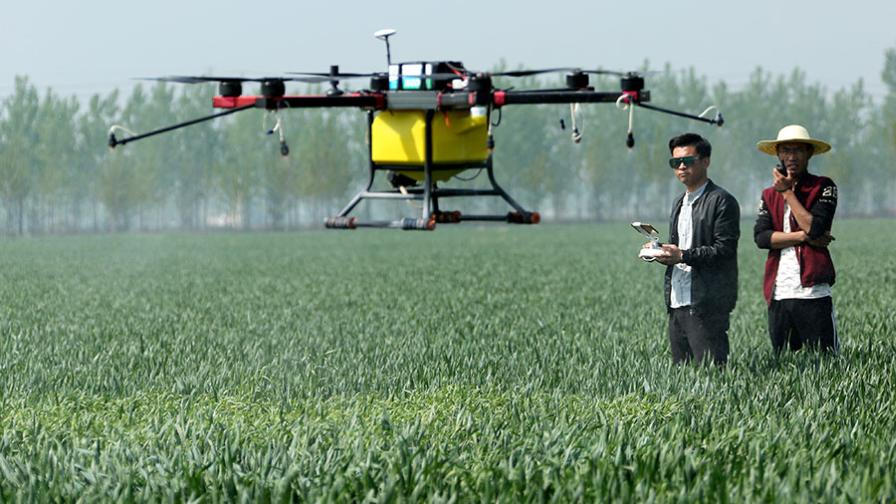Hype Train on the Tracks: Agricultural Drone Usage Uptick On Deck

U.S. regulations are finally moving in the right direction for widespread ag drone adoption, allowing the U.S. to finally join places like Japan and China atop the medal podium of drone usage. Photo credit: China Daily
I think it’s finally safe to say that agricultural drones are in a bit of a sweet spot right now.
Since dollars draw eyes and ears, we’ll kick off with the fact that a recently released study projects the commercial drone space in ag (the firm that commissioned the study included robotics with the forecast for some reason), previously valued at a paltry $2.5 million in 2018, could “explode” to a $23 billion market cap by 2028.
There’s good news on the regulatory side here in the U.S. as well: North Dakota, long a research and development proving ground for the best of the best in the drone world, has announced a state investment of $28 million in what’s been dubbed a “first of its kind” Beyond Visual Line of Sight (BVLOS) network. Seems like we’ve been asking for relief from the Federal Aviation Administration (FAA) on the BVLOS requirement since before the ink on Part 107 had even dried back in 2016, and it’s looking like we’re close to hitting pay dirt on that front.
Drone delivery looks like it’s coming online sooner than many had thought possible, with Google-backed startup Alphabet beating Amazon to the punch on being the first last-mile consumer drone delivery service to start delivering packages in rural Virginia.
MORE BY MATTHEW J. GRASSI
VISION Conference Preview: Someday, AI Might Grow Better Plants than People
2019 Commercial UAV Expo: 3 Quick Revelations From an Ag Drone Expert
Specialty Crops: 8 More Precision Technology Companies We’re Keeping an Eye On
Specific to ag, we recently published a three-part series on the major players both domestically and internationally in what’s been dubbed the next frontier in crop protection application – spray drones. Using the herbicide- and fungicide-spraying birds to get away from blanket, over-the-top field sprays into a more spot-treatment strategy, as well as reducing drift with better coverage and canopy penetration via the downward prop wash, adds a strong sustainability angle for consumers around the world. It’s no wonder there are some serious international heavy hitters like Bayer and ADAMA investing big R&D dollars on developing these solutions.
Not to mention, quite frankly, that it had been too long since a drone hardware release itself moved the needle, and Parrot’s recently released ANAFI Thermal package certainly scratched that itch. For the shockingly low-price tag of around $1,900 a user gets an integrated dual thermal- and RGB-sensing payload, with optical zoom and a ton of automated flight features. The fold-able quad design weighs in at under 330 grams and easily fits in a backpack or pickup truck middle console. Prior to the release it was easily a $5,000 investment at least to get into the thermal sensing game, and those sensors were aftermarket add-ons and not integrated into the drone itself.
Now, that’s not to say we’re completely out of the woods yet, fellow Dronies…
We can’t start poppin’ bottles and delivering Gronk Spikes to the drone haters quite yet, but it’s nice to see this industry start to find its sea legs after years of wallowing in skepticism and early-adopter blues.
Some day – and it might be fairly soon, honestly, if our regulatory folks in Washington can get working on a lot of this stuff we’ve outlined above – the U.S. may finally join places like Japan and China atop the medal podium of drone usage.
And that, my friend, would make all the crashed quads and burned-out batteries worth it.










